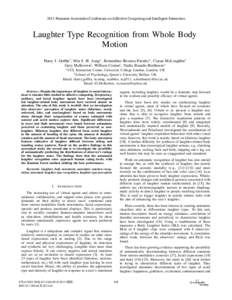 Date: 2013-09-16 09:39:18Brain Defence mechanisms Cerebrum Laughter Psychology Humour Laugh track Chimpanzee Embarrassment Internet slang Gesture recognition Affective computing | |  2013 Humaine Association Conference on Affective Computing and Intelligent Interaction Laughter Type Recognition from Whole Body Motion Harry J. Griffin∗ , Min S. H. Aung∗ , Bernardino Romera-Paredes∗ , Ciaran Mc 2013 Humaine Association Conference on Affective Computing and Intelligent Interaction Laughter Type Recognition from Whole Body Motion Harry J. Griffin∗ , Min S. H. Aung∗ , Bernardino Romera-Paredes∗ , Ciaran Mc
Add to Reading ListSource URL: www.ilhaire.euDownload Document from Source Website File Size: 210,17 KBShare Document on Facebook
|

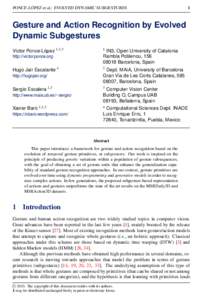
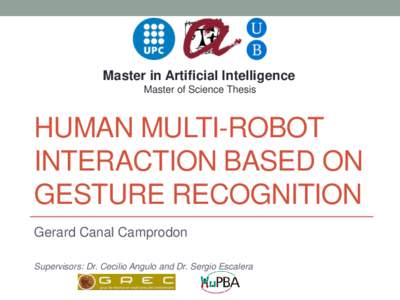
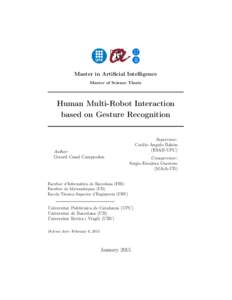
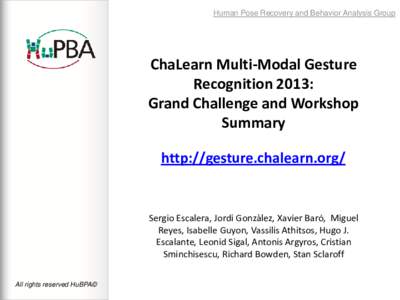
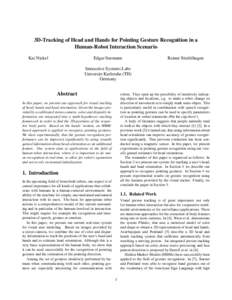
 2013 Humaine Association Conference on Affective Computing and Intelligent Interaction Laughter Type Recognition from Whole Body Motion Harry J. Griffin∗ , Min S. H. Aung∗ , Bernardino Romera-Paredes∗ , Ciaran Mc
2013 Humaine Association Conference on Affective Computing and Intelligent Interaction Laughter Type Recognition from Whole Body Motion Harry J. Griffin∗ , Min S. H. Aung∗ , Bernardino Romera-Paredes∗ , Ciaran Mc